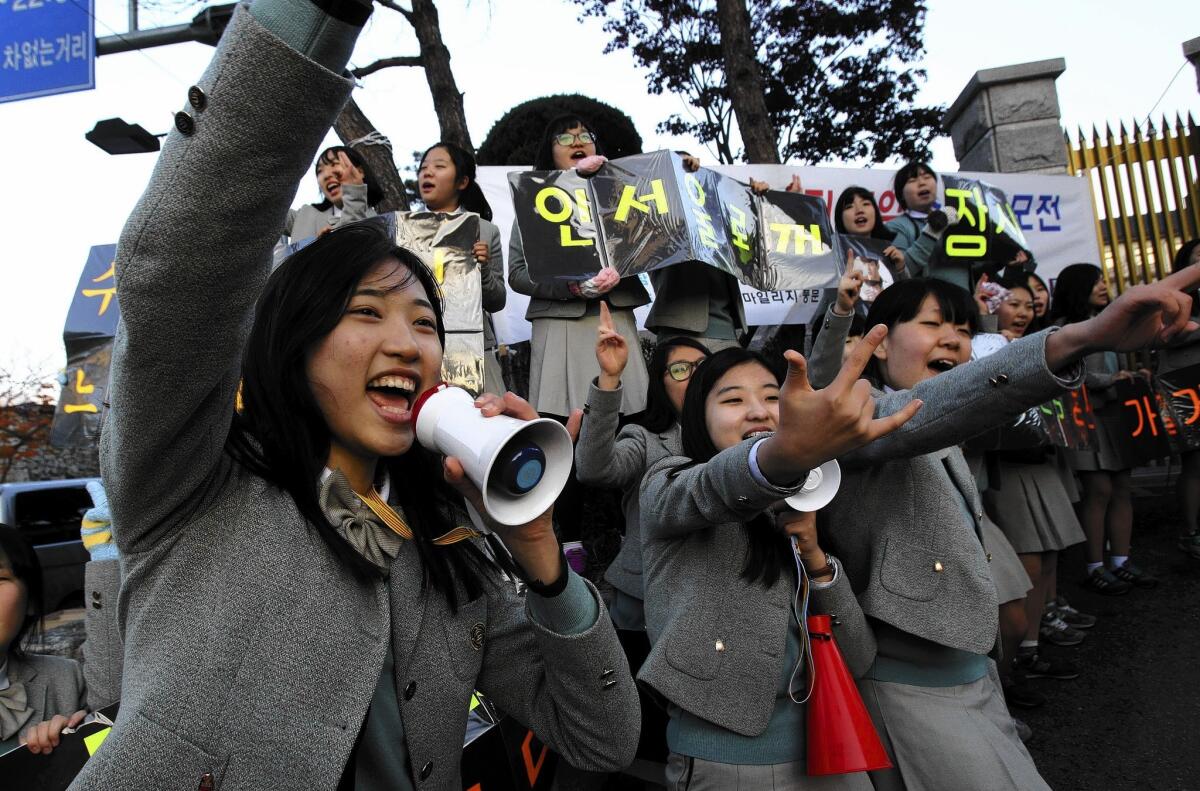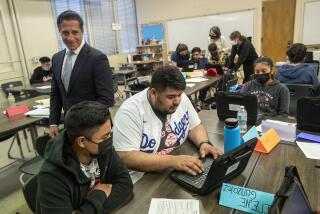Letters: Why are American students falling behind?

- Share via
Re “Can U.S. students get smart?,” Opinion, Dec. 14
Solomon Friedberg presents a thoughtful analysis of the new Common Core learning standards and what will be needed to raise student achievement. Regarding the implementation of the new standards, he states that “the keys to implementation are textbooks, teachers and testing.” He analyzes the needed changes in each of these areas.
But as is the case with too many education experts, Friedberg ignores perhaps the most important variable: what happens in the lives of students between 4 p.m. and 11 p.m.
As an educator for 36 years, it was clear to me that what students do when they leave the classroom more often than not is the essential ingredient to academic achievement. In countries that lead worldwide efforts to improve education, there is most likely an adult at home when the student returns from school. And this adult plays a vital role in ensuring that the day’s learning period has just begun.
Obviously, economic need limits what can be done. But I can only hope that organizations like the Bill & Melinda Gates Foundation are supporting the best available minds in exploring new ways to engage families in improving education.
Ed Grubbs
Spring Valley
Friedberg should read “Outliers” by Malcolm Gladwell, which extols societies that honor long hours of work and the determination to stick with a problem longer, as is common in many Asian countries.
Gladwell points out that the same countries have longer school days and longer school years. Perhaps if the U.S. moved in their direction, we could more readily compete.
The truth is, many students from Asian countries transplanted here have an advantage. Drive through parts of the San Gabriel Valley and you will notice many after-school academies that greatly extend the school day.
We are spending the limited school hours we do have on meals, rest times, athletics and other non-academic activities, and our kids are being squeezed out of the job market.
William E. Durkee
El Monte
While I agree with Friedberg, it seems to me that the biggest cause of American students’ poor performance of late is the proliferation of the Internet over the last few decades. The ability to just search the Web has deprived students of opportunities to think critically.
I teach an upper-division class at a major university, and 40% of my students cannot place the Atlantic or Pacific oceans on a map in relation to South America. Correct spelling and coherently written paragraphs are exceptions.
One should be made to read the work of the late Stanford communications professor Clifford Nass, who warned of the effects of technology and multitasking.
The education system has failed this generation, which is partly why we have uninformed lawmakers.
The chickens have come home to roost.
Adam Mekler
Pasadena
America’s education problem and its increasing income inequality are inextricably intertwined. When and if we restore or begin a balance between executives and workers, we may begin to see a turnaround.
Richard P. McDonough
Irvine
ALSO:
Mailbag: A handshake and a selfie
Letters: Vulgarity’s just par for the course
Letters: How is Sheriff Baca doing? Depends.
More to Read
A cure for the common opinion
Get thought-provoking perspectives with our weekly newsletter.
You may occasionally receive promotional content from the Los Angeles Times.






